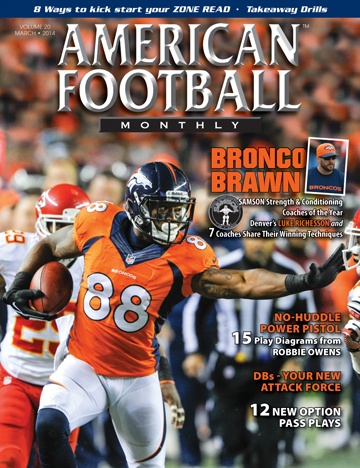Article CategoriesAFM Magazine
|
Defensive Back Attack Forceby: Jamison BischDefensive Coordinator New Mexico Military Institute © More from this issue Three different techniques – Shoot the Hip, Glove, and Catch-Hit – can help your defensive backs attack the football. A DB has three things he can do when breaking on the ball – intercept the pass, knock the pass down, or make the tackle. We teach defensive backs three different ways of attacking the football when a wide receiver is being thrown the ball – “shoot the hip”, “glove”, and “catch-hit.” Each of these techniques can be taught whether your DBs backpedal, crossover run, shuffle, or use of another technique. One of the most important things a DB must understand is when to use each technique when defending passes. We use shoot the hip when a DB is in position to make an interception. We use glove when a DB is not quite in position to make an interception, but can still knock the ball down. The third technique, ca....The full article can only be seen by subscribers.
|
|
|||||||
| HOME |
MAGAZINE |
SUBSCRIBE | ONLINE COLUMNISTS | COACHING VIDEOS |
Copyright 2025, AmericanFootballMonthly.com
All Rights Reserved





